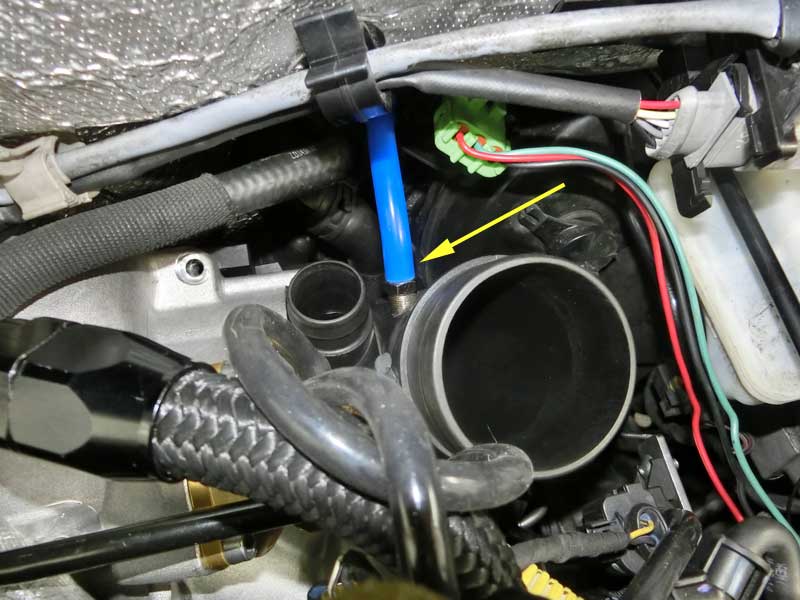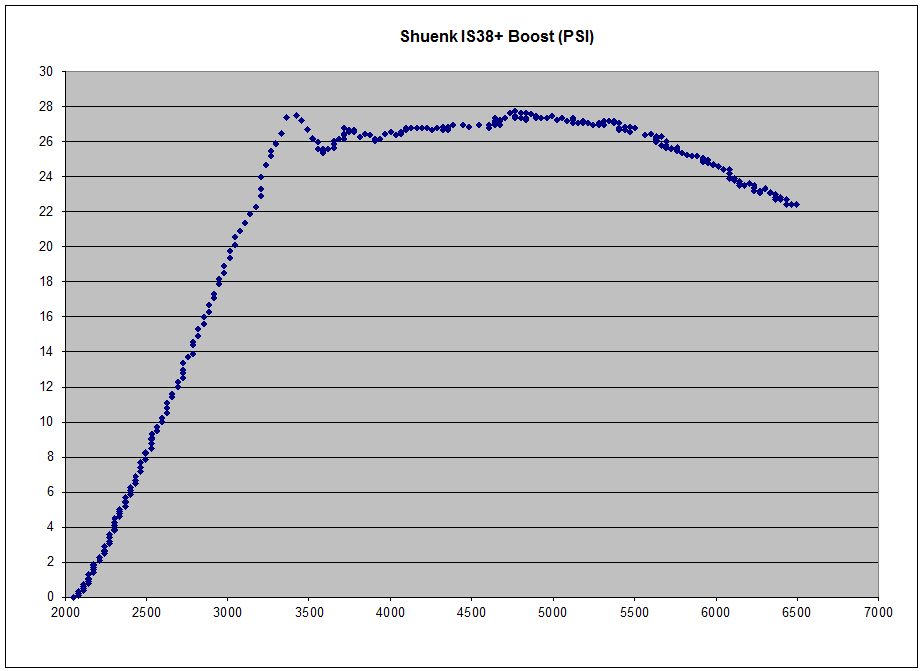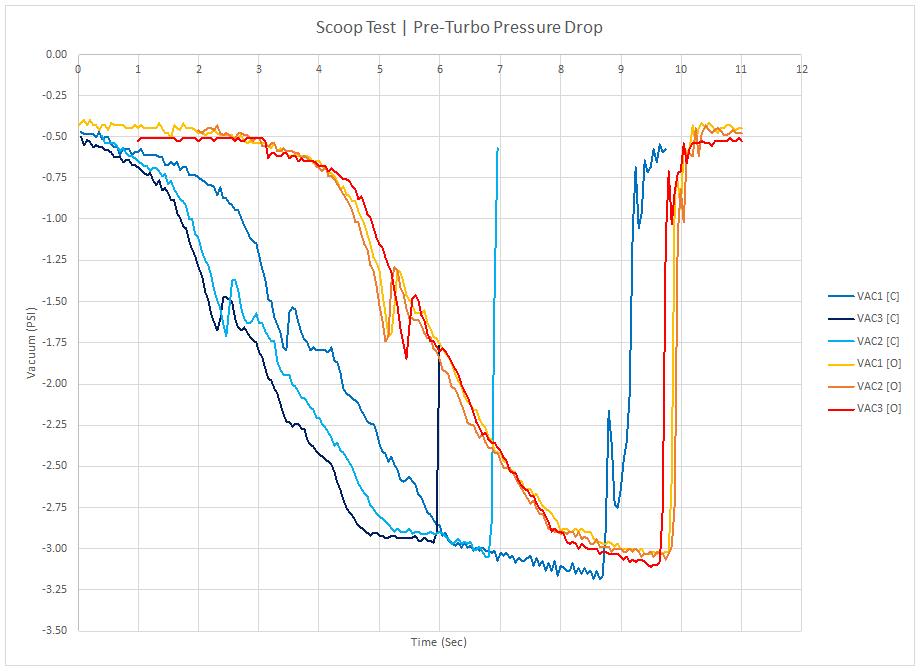A second test for the Mk7 GTI air scoop focuses on evaluating the affect of the part on airflow to the turbocharger. The first test looked at air temperature exiting the airbox.
Airflow into the turbocharger compressor is produced by having a vacuum at the entrance to the compressor. If air encounters less restriction en-route to the turbocharger then less vacuum will be needed to draw in the air.
If installing the scoop reduces the pressure drop along the intake, by allowing an additional pathway for air to reach the turbocharger, or if the scoop acts as a ram, increasing the pressure at the inlet to the intake, the result will be a decrease in the vacuum measured at the entrance to the turbocharger.
Setup:
A port is installed in the inlet elbow leading into the turbocharger to measure the vacuum generated during boost, a high airflow state.

For this test the Shuenk IS38+ turbocharger is being used with a boost curve shown in the chart below.

The GTI will be operated in 3rd gear at wide open throttle beginning at approximately 2500 rpm up to an engine speed of approximately 6000 rpm. With increasing engine speed more air needs to be drawn into the engine. Three pulls in each of the two configurations will be recorded.
Results:
The chart below shows the pressure drop prior to the turbocharger for each of the test runs.

The pressure drop from steady state driving, pre-boost, to maximum pressure drop, provides the pressure delta. The chart shows that over time, with boost building and engine RPM increasing, the vacuum at the entrance to the turbo increases.
The magnitude of the pressure change is listed for each test condition below.
No Scoop:
- 2.711 psi
- 2.465 psi
- 2.557 psi
Average: 2.58 psi
With Scoop:
- 2.603 psi
- 2.603 psi
- 2.588 psi
Average: 2.60 psi
Conclusion:
The addition of the scoop does not significantly change the vacuum created at the entry to the turbocharger under the test conditions.
Further tests will be documented on this page.

Well, that was a lot of work to arrive at no benefit. I’d say these “scoop” products sell only because it SEEMS like they should add value.
So far it’s not looking good, but I’d like to run a few more different scenarios and see what the results are.
Did the IAT go down at all? Or is this completely pointless?
Hi Marko, I have not yet reviewed the Intercooler temperature data that I recorded. Because measuring that property was not the intent of the test I don’t know what the quality of the temperature data is. I need to look over the results and determine if I can use the data.
I’m a bit surprised as I was sure when I opened up the closed side of my air scoop on MK7 R it felt peppier. I want to say there’s at least a 3/4″ gap where the air scoop is at with a direct feed to front. Mind you, there’s almost a two foot section from where the air scoop can take in air. I haven’t looked at a GTI but I assume the setup is not the same?
Fernando, I’ve got a picture of what the cutout on my grill looks like from above in this post.
http://mygolfmk7.com/2019/10/air-scoop-commute-temperature-test/
I think there are enough places for the intake to draw air in from that making an additional opening is more than is needed. I’ve got a couple other things to measure, boost onset being one, so perhaps that will show a difference.
Ah, I wasn’t paying attention before but I see it now. The R’s setup is different. Wish I could ship you my front end so you could test it but that would be cost prohibitive. 🙂 I’m looking forward to your new findings. Cheers!